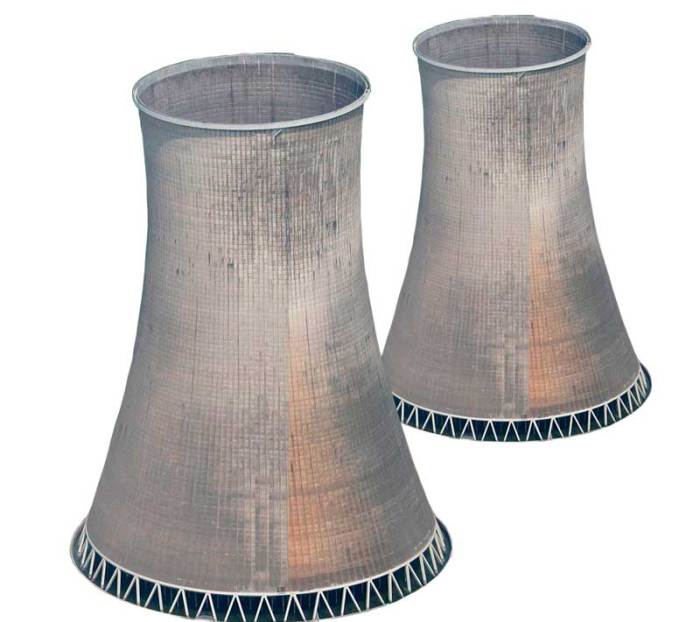Why are biocides added to cooling-tower water? This question takes center stage in this exploration of the crucial role biocides play in maintaining the integrity and efficiency of cooling-tower systems. As we delve into the intricate world of biocides, we will uncover their purpose, mechanisms of action, and the importance of their judicious application.
Join us on this journey of discovery, where knowledge and practical insights converge.
Biocides, the unsung heroes of cooling-tower water systems, safeguard these systems from the relentless onslaught of microorganisms. Their presence ensures that cooling towers operate at peak efficiency, free from the detrimental effects of biofilm formation and microbial proliferation.
Biocide Basics: Why Are Biocides Added To Cooling-tower Water

Biocides are chemical substances added to cooling-tower water to control the growth and proliferation of microorganisms, such as bacteria, algae, and fungi. These microorganisms can form biofilms, which are complex communities of microorganisms that adhere to surfaces and can cause corrosion, fouling, and other problems in cooling towers.
There are different types of biocides used in cooling-tower water, each with its own mechanism of action. Some common types of biocides include:
- Oxidizing biocides, such as chlorine, bromine, and ozone, which kill microorganisms by oxidizing their cell membranes and proteins.
- Non-oxidizing biocides, such as quaternary ammonium compounds and isothiazolones, which disrupt the cell membranes of microorganisms and cause leakage of cell contents.
- Biofilm inhibitors, such as polyphosphates and phosphonates, which prevent microorganisms from attaching to surfaces and forming biofilms.
Biofilm Formation and Control
Biofilms are formed when microorganisms attach to surfaces and secrete a protective matrix of extracellular polymeric substances (EPS). This matrix helps the microorganisms to adhere to surfaces, resist antimicrobial agents, and communicate with each other. Biofilms can cause a variety of problems in cooling towers, including:
- Corrosion, as the microorganisms in biofilms produce acids and other corrosive substances that can damage metal surfaces.
- Fouling, as the biofilms can block the flow of water and reduce the efficiency of the cooling tower.
- Increased microbial growth, as the biofilms provide a protected environment for microorganisms to grow and multiply.
Biocides can be used to inhibit biofilm formation and control the growth of microorganisms in cooling towers. Biocides can be applied continuously or intermittently, depending on the type of biocide and the severity of the biofilm problem.
Biocide Application and Monitoring

The selection of the appropriate biocide for a cooling-tower system depends on a number of factors, including the type of microorganisms present, the water chemistry, and the operating conditions of the cooling tower. Biocides should be applied according to the manufacturer’s instructions and in compliance with all applicable regulations.
It is important to monitor biocide levels in cooling-tower water to ensure that they are within the recommended range. Biocide levels can be monitored using a variety of methods, such as test strips, colorimetric tests, and titration. Biocide levels should be adjusted as needed to maintain effective control of microorganisms.
Environmental Considerations

Biocides can have a negative impact on the environment if they are not used properly. Biocides can be toxic to aquatic organisms, and they can also contribute to the development of antibiotic resistance in bacteria. It is important to use biocides only when necessary and to follow all applicable regulations for their use.
There are a number of sustainable biocide alternatives that are available, such as ultraviolet light and ozone. These alternatives can be used to reduce the use of traditional biocides and their associated environmental impacts.
Popular Questions
What are the primary functions of biocides in cooling-tower water?
Biocides serve as guardians against microbial proliferation, preventing the formation of biofilm and the spread of waterborne pathogens.
How do biocides combat biofilm formation?
Biocides effectively inhibit the adhesion and colonization of microorganisms on surfaces, thereby preventing the establishment of biofilm.
Why is regular biocide treatment crucial?
Regular biocide treatment is paramount in preventing the accumulation of biofilm, which can lead to reduced heat transfer efficiency, increased corrosion, and heightened microbial risks.
Are there environmental concerns associated with biocide use?
While biocides are essential for cooling-tower water maintenance, their potential environmental impact must be carefully considered. Proper selection and application practices minimize environmental harm.